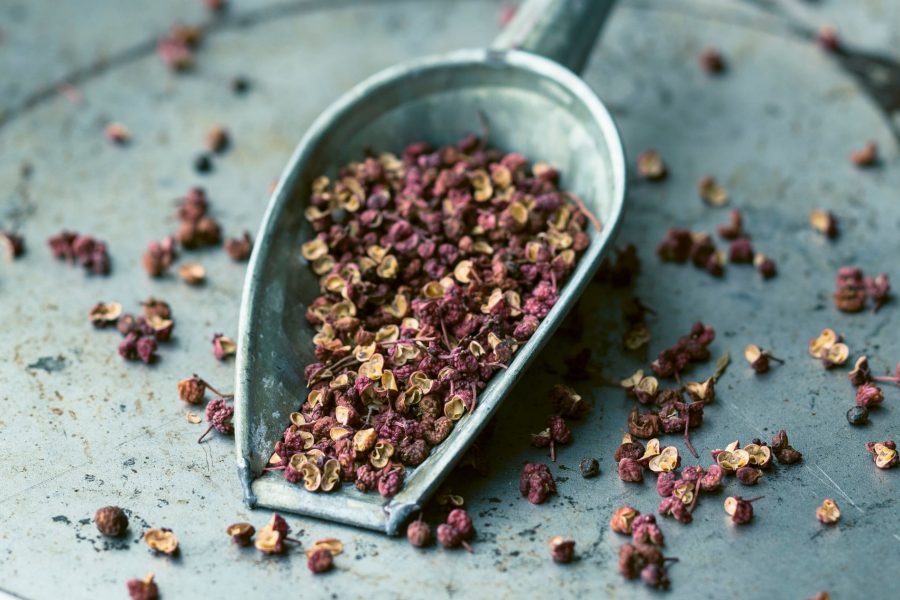It’s an obsession shared by many who love Chinese food: Sichuan peppercorns, or hua jiao.
The tiny, woody jewels that famously numb the lips are not peppercorns at all, but seed pods of the prickly ash tree.
The unique sensation they produce – likened by culinary scientist Harold McGee to ‘touching the terminals of a nine-volt battery to the tongue’ – comes from the world’s best-named molecule, hydroxy-alpha sanshool.
The shrub-like trees grow on hillsides in pockets of the vast countryside of China’s Sichuan province, with the best coming from Hanyuan County, three hours’ drive southwest of Chengdu, where the two distinct types of hua jiao are red and green – each with unique flavour profiles. They appear across Sichuan cuisine from malahuoguo (Sichuan hotpot) to huiguorou (twice-cooked pork belly); and from the tofu and minced pork dish, mapodoufu to the spicy noodle bowl, dandanmian.
But for this fan, one incarnation reigns supreme: guo kui, a street food snack. The finest example of these doughy flatbreads contains ground pork humming with hua jiao, chilli and salt, rolled into discs which are gently fried until golden and flaky. The crisp exterior gives way to heady spices and that unmistakeable tingling.
Chengdu’s definitive guo kui spot is a matter of considerable discussion – but for many, the original branch of Wang Ji Guo Kui, just inside the First Ring Road North, takes the prize. Sensational – literally – at any time, they’re best hot out of the pan on a cold Sichuan day.
Chris Dwyer is a Hong Kong-based food and travel writer. He stayed at Upper House Chengdu , where a Sichuan Negroni is on the menu at the hotel bar, Jing.
All listed products, prices and Asia Miles redemption rates are accurate at time of publication and may be subject to change.
More inspiration
Chengdu travel information
- China – the Chinese Mainland, Hong Kong SAR, Macao SAR and Taiwan Region
- Hong Kong SAR - English
- Chinese Mainland (China) - English
- Taiwan, China - English
- 香港特別行政區 - 繁體中文
- 中国內地 - 简体中文
- 中國台灣 - 繁體中文
- Africa
- South Africa - English
- Asia
- Bangladesh - English
- Korea - English
- Singapore - English
- Cambodia - English
- 한국 - 한국어
- Sri Lanka - English
- India - English
- Malaysia - English
- Thailand - English
- Indonesia - English
- Maldives - English
- ประเทศไทย - ภาษาไทย
- Indonesia - Bahasa Indonesia
- Myanmar - English
- Vietnam - English
- Japan - English
- Nepal - English
- Việt Nam - tiếng Việt
- 日本 - 日本語
- Philippines - English
- Australasia
- Australia - English
- New Zealand - English













